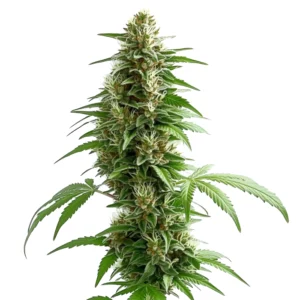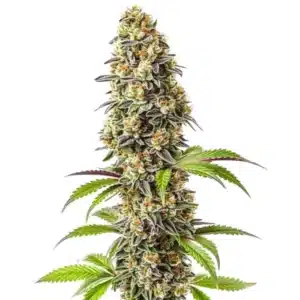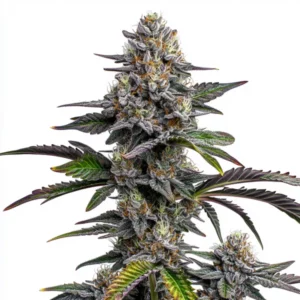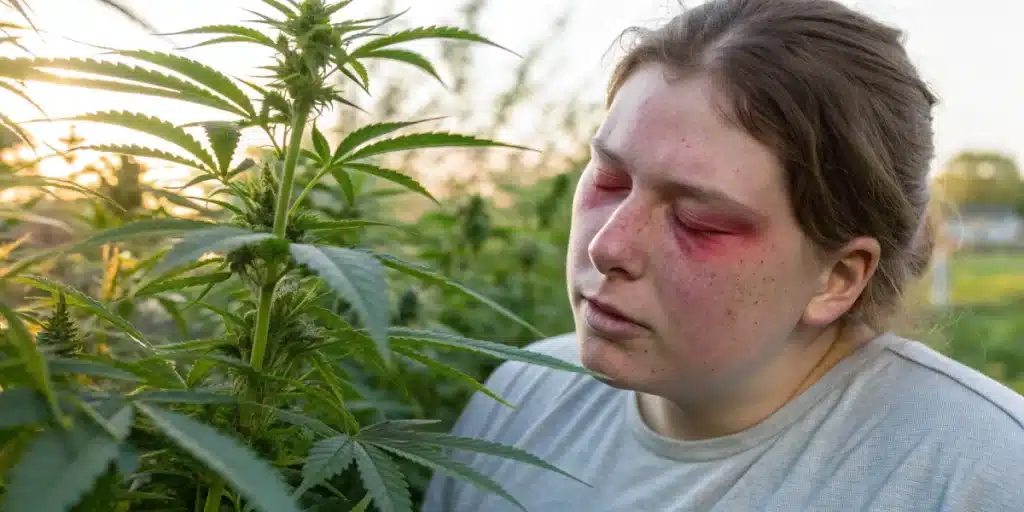
Can Someone Be Allergic to Cannabis? Facts and Insights
Examining Cannabis Allergy Basics
Common Allergens in Cannabis
Cannabis, like many other plants, can be a significant source of allergens that adversely affect sensitive individuals. The primary culprits include pollen, a range of volatile terpenes, and specific proteins naturally present in the plant. Pollen released by cannabis plants easily drifts through the air and triggers symptoms in those with seasonal allergies or chronic sensitivities. Terpenes, the aromatic compounds that give cannabis its distinctive smell, sometimes provoke unexpected allergic reactions. These compounds exist abundantly in cannabis and in many other plants, which can complicate the accurate diagnosis of allergic symptoms.
Terpenes, the aromatic compounds that give cannabis its distinctive smell, sometimes provoke unexpected allergic reactions. These compounds exist abundantly in cannabis and in many other plants, which can complicate the accurate diagnosis of allergic symptoms. In addition to pollen and terpenes, particular proteins within cannabis may also act as potent allergens. Research shows that some individuals develop noticeable reactions to these specific proteins, producing symptoms similar to other environmental allergies.
Recommended Strains
Alaskan Purple
|
|
THC | 15% - 20% (Medium) |
|
|
Type | Feminized |
|
|
Yield | Medium |
|
|
Phenotype | 70% Indica / 30% Sativa |
Alaskan x Kush x Brazil
|
|
THC | 15% - 20% (Medium) |
|
|
Type | Feminized |
|
|
Yield | High |
|
|
Phenotype | 60% Indica / 40% Sativa |
Gaining a clear comprehension of these allergens remains essential for both users and cultivators so they can identify potential risks associated with cannabis exposure. After all, as our expert highlights, these natural compounds act as the plant’s self-defense mechanism to protect its seeds—yet for humans, they can become sources of sensitivity.
Typical Immune Responses
When an individual experiences an allergic reaction to cannabis, their immune system misidentifies harmless plant components as dangerous threats. This overreaction rapidly releases histamines and other chemicals that trigger a range of allergy symptoms. The intensity and pattern of the immune response differ noticeably among individuals, which challenges clinicians when predicting a reaction to cannabis exposure.
Some individuals may suffer only mild symptoms such as persistent sneezing, itchy eyes, or minor skin rashes, whereas others may endure severe reactions like breathing difficulties or full-blown anaphylaxis. Detecting these responses early allows patients to take charge of their condition. In cultivation environments, our expert strongly advises the use of gloves and protective masks to reduce direct exposure, particularly during flowering phases when pollen is most active.
Promos & Deals
Recognizing Allergy Symptoms
Common Signs of a Cannabis Allergy
Identifying the signs of a cannabis allergy often proves challenging because the symptoms overlap with those of other common allergens. Typical indications may present as respiratory issues, skin irritations, or even gastrointestinal disturbances. For example, individuals might experience continuous sneezing, coughing, or shortness of breath after inhaling cannabis smoke or airborne pollen.
Skin reactions such as hives or rashes are often caused by direct contact with cannabis leaves or resin. Our expert emphasizes that even exposure to air containing suspended allergens can irritate the skin, especially if protective clothing is not used. Long sleeves and face coverings can make a significant difference for cultivators, particularly in enclosed grow spaces.
Diagnostic Methods and Testing
Diagnosing a cannabis allergy typically requires a comprehensive evaluation that includes a detailed patient history, a complete physical examination, and targeted allergy testing. Healthcare professionals ask about the patient’s symptoms, the frequency of cannabis exposure, and any family history of allergies. They then perform skin prick tests or order specific blood tests to identify individual allergens.
Although these tests offer useful insights, false positives and negatives can occur. That’s why our expert insists on not relying solely on results cultivators should prioritize preventive measures like proper ventilation and high-efficiency air extraction to keep allergen levels under control in indoor grows. These tools are key to avoiding the accumulation of pollen and volatile compounds in enclosed environments.

Identifying Risk Factors
Genetic Predispositions
The risk of developing an allergy to cannabis often hinges on genetic factors. Individuals with a family history of allergies, particularly those related to plants or airborne pollen, face a higher probability of experiencing a cannabis allergy. Genetic predispositions influence how the immune system responds to various allergens such as proteins, terpenes, and pollen from the plant.
Moreover, people suffering from pre-existing conditions like hay fever, eczema, or asthma have an elevated risk. For them, even trace exposure to airborne compounds in a cannabis grow room can trigger noticeable symptoms. Cultivators in these situations must take extra precautions to reduce skin contact and inhalation risks, especially when handling flowering plants or dried material.
Environmental Influences
Environmental conditions contribute significantly to the risk of developing a cannabis allergy. Individuals living near large-scale outdoor grows or working in indoor facilities with poor airflow often face elevated exposure. As our expert states, poor extraction systems and stagnant air can create a build-up of airborne allergens, making symptoms more likely and more severe.
Lifestyle choices like smoking cannabis regularly or exposure to secondhand smoke can also increase sensitivity over time. Those who suspect they may be allergic should track their symptoms and limit contact with these potential triggers, especially in areas where cannabis is processed or stored in bulk.
Treatment and Management Options
Strategies to Avoid Allergens
Controlling a cannabis allergy often involves actively avoiding exposure to known allergens. For those prone to reactions, staying indoors during peak pollen periods or during harvest season helps minimize symptoms. Air purifiers with HEPA filters and sealing windows can drastically reduce airborne allergens at home.
For cultivators, our expert suggests combining extraction systems with proper personal protection: gloves, masks, and full-body clothing. These precautions limit both respiratory and dermal exposure, keeping symptoms at bay. Prevention becomes the first line of defense in managing cannabis-related allergies.
Reading product labels and consulting with trained healthcare professionals allows consumers to avoid cannabis-derived products that might trigger symptoms. For topical or edible users, this is especially important, as reactions can vary depending on the route of exposure.
Medical Interventions for Relief
When avoidance strategies fall short, medical interventions become necessary. Doctors typically begin with antihistamines to manage nasal and skin-related symptoms. In more serious cases, corticosteroids or bronchodilators may be prescribed to ease inflammation and restore normal breathing.
Immunotherapy is currently being studied for cannabis-related allergens, offering long-term hope for desensitization. While still emerging, this method could become a viable option for those with severe or chronic reactions. For now, patients benefit most from a tailored treatment plan combining medication, environmental control, and education.
Current Research and Future Perspectives
Ongoing Studies on Cannabis Allergies
Scientific research into cannabis allergies is gaining momentum as legalization expands. Researchers are actively analyzing the molecular structure of cannabis allergens to develop more accurate testing and effective therapies. Studies increasingly include questions like “Can someone be allergic to cannabis?” as more patients report symptoms once thought unrelated.
This growing body of knowledge helps both doctors and patients better understand the risks. It also raises awareness among growers and users alike, encouraging proactive health measures. Future breakthroughs may include personalized allergy screening based on a patient’s genetic profile or occupational exposure levels.
Advancements in Allergy Management
Modern diagnostics now allow allergists to pinpoint individual cannabis allergens with greater precision using molecular allergology techniques. These advancements make it easier to differentiate between terpene sensitivity, protein allergy, and environmental pollen reactions.
Educational outreach is also evolving. Cultivators and users now receive clearer guidance on how to protect themselves in both personal and professional settings. Our expert encourages more grow operations to implement controlled environments with ventilation, filtered air, and routine allergen monitoring to ensure workplace safety.
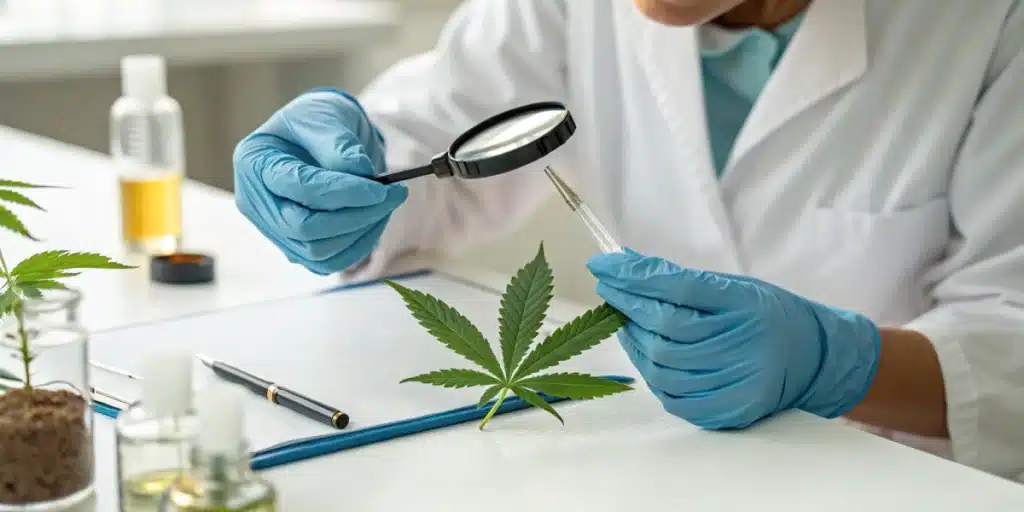
FAQs about Can Someone Be Allergic to Cannabis
What are the primary symptoms of a cannabis allergy?
People experiencing a cannabis allergy typically report several common symptoms. These include respiratory issues such as sneezing, coughing, and shortness of breath, along with skin problems like rashes and hives. Some individuals also suffer from gastrointestinal discomfort, including nausea and stomach cramps. If you suspect that Can Someone Be Allergic to Cannabis, monitor these signs carefully and consult a healthcare professional. Early detection of these symptoms can lead to more effective management and improved quality of life.
How is a cannabis allergy diagnosed?
Doctors diagnose a cannabis allergy by gathering detailed patient history and performing a thorough physical examination. They often recommend diagnostic tests, such as skin prick tests or specialized blood tests, to identify specific allergens linked to cannabis. These evaluations help ensure an accurate diagnosis and appropriate treatment plan. If you wonder, “Can Someone Be Allergic to Cannabis?” these tests provide the necessary clarity. Consulting with an allergist plays a key role in addressing any uncertainties and tailoring the best management strategy for you.
What treatment options can help manage the allergy?
Effective treatment for cannabis allergies involves both avoidance and medical intervention. Patients learn to limit exposure by staying away from high-allergen environments and reading product labels vigilantly. Healthcare providers may prescribe antihistamines or corticosteroids to relieve symptoms rapidly. Some even consider immunotherapy to build tolerance over time. If you ask, “Can Someone Be Allergic to Cannabis?” you should know that a customized plan that combines these strategies often yields the best results. Regular follow-ups with an allergy specialist help adjust the plan as needed for long-term relief.




